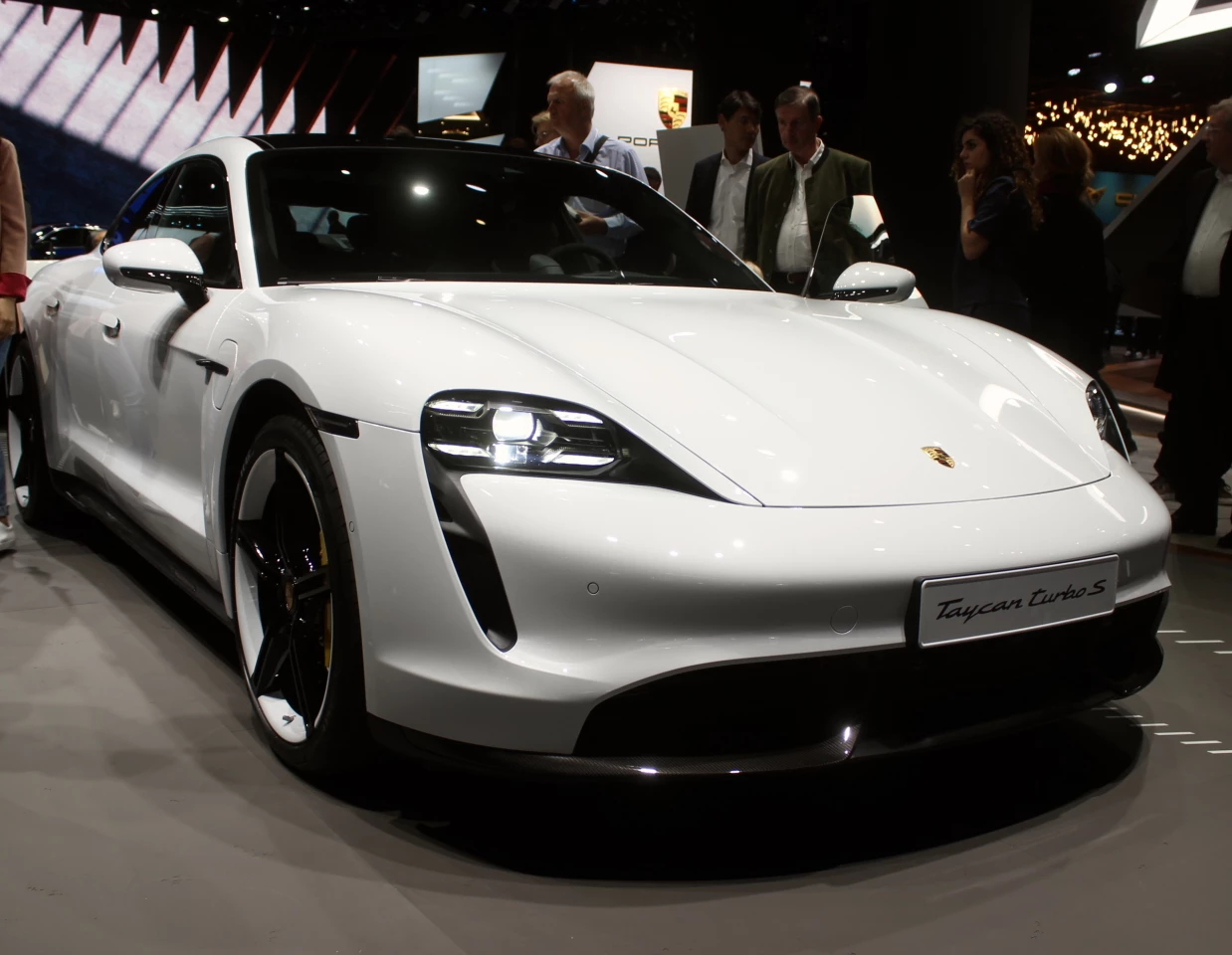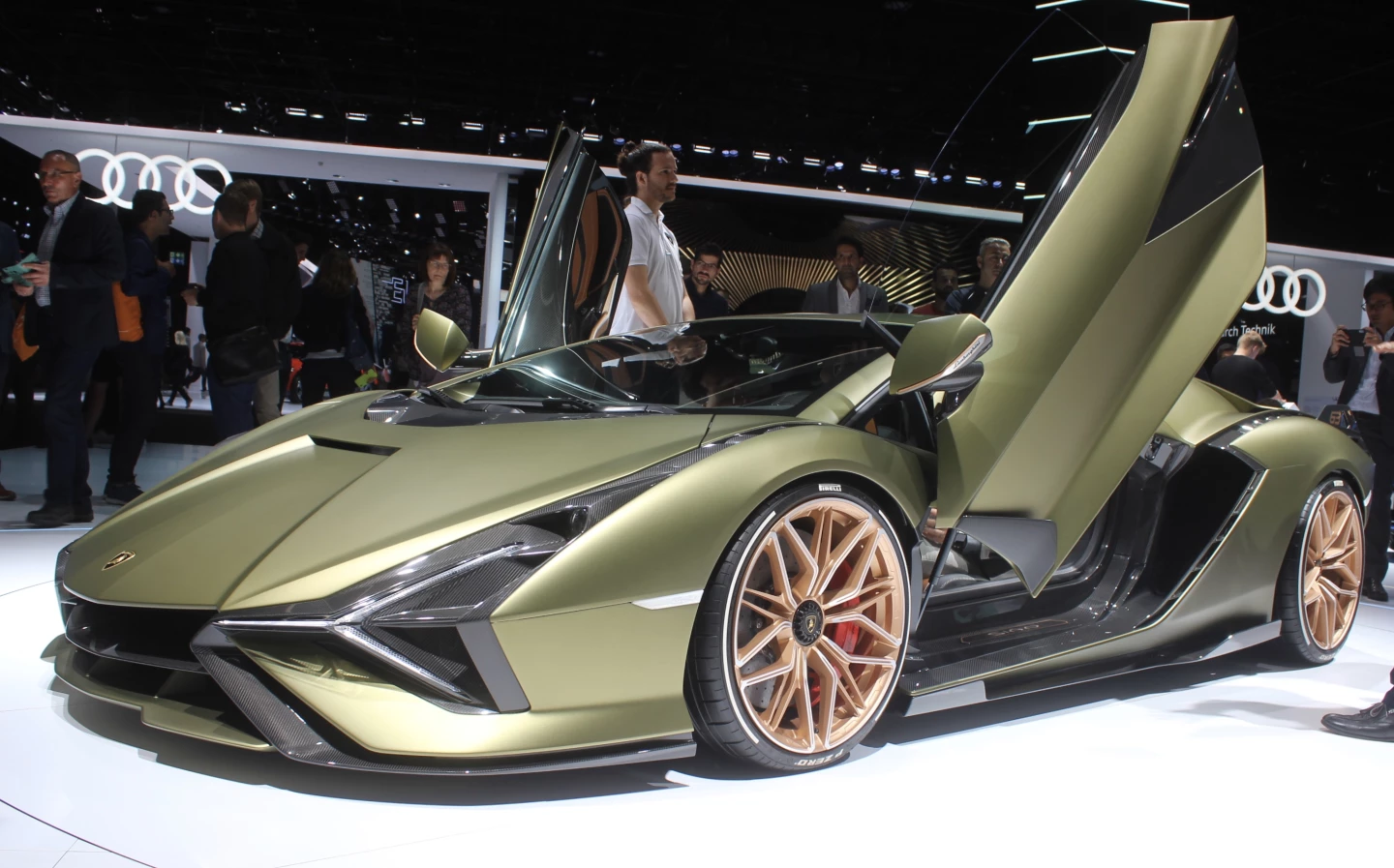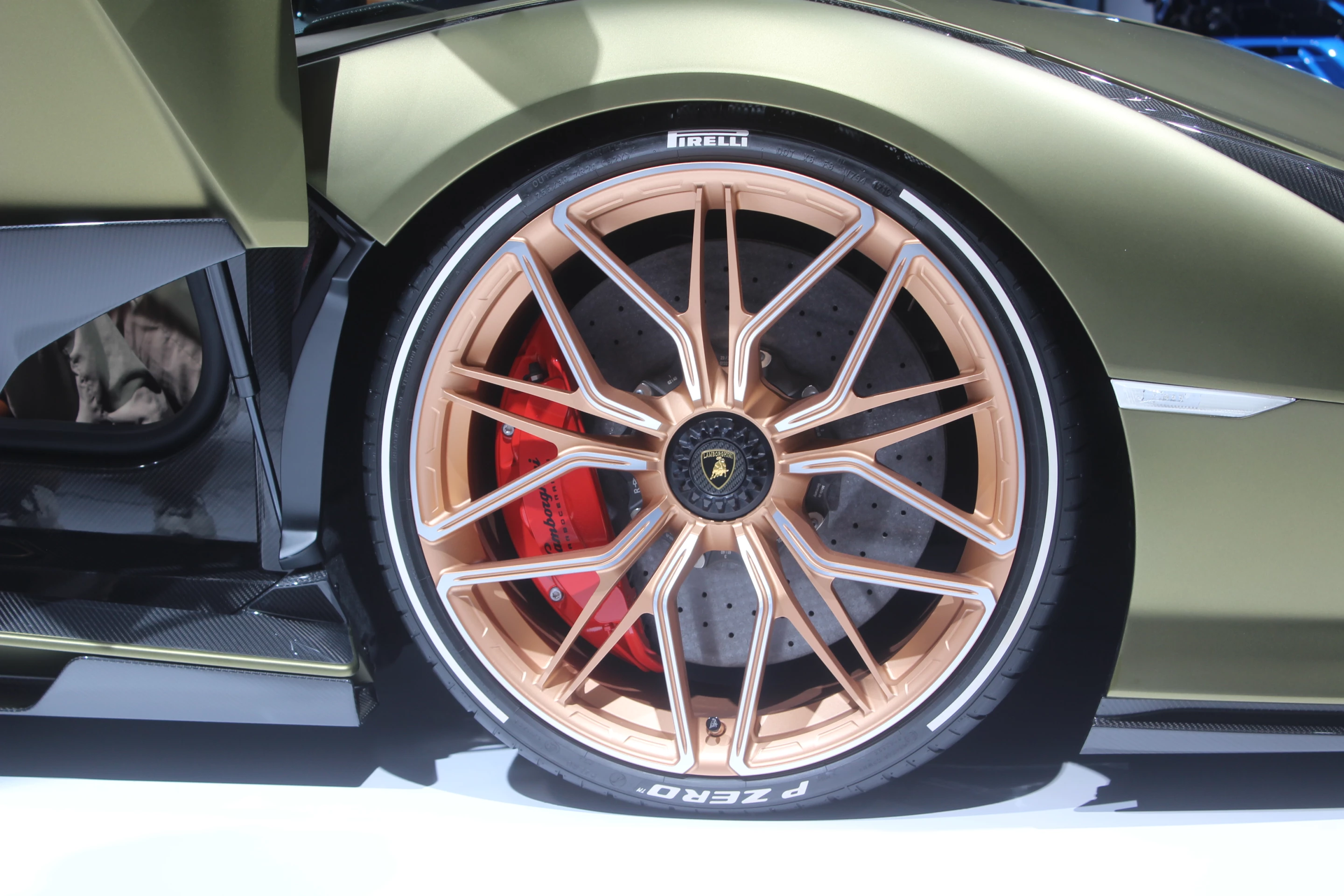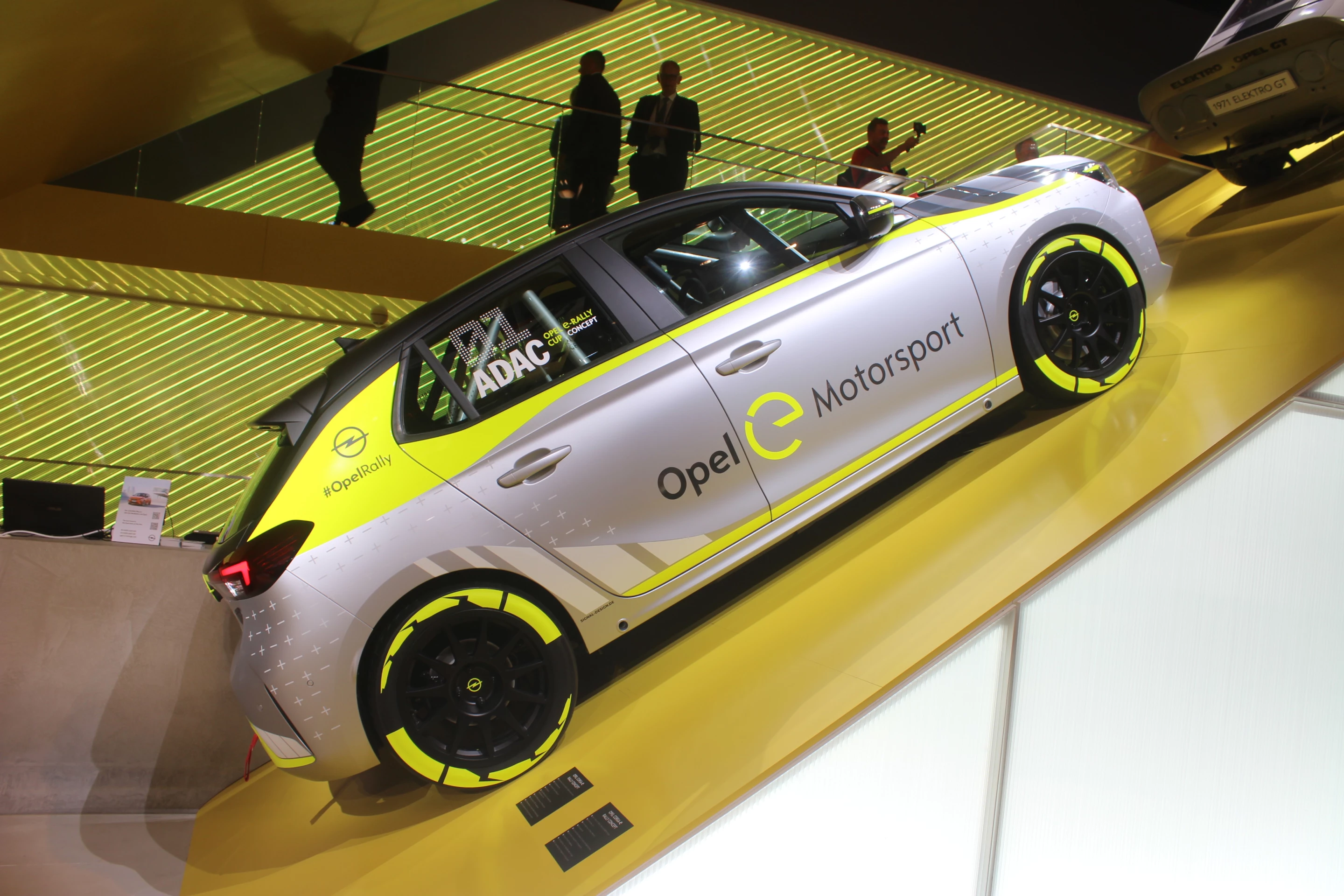As with any modern-day auto show, electric and hybrid powertrain technology is one of the big themes at this year's IAA Frankfurt show. While some of that technology can be found in simple, practical everyday commuters like the Volkswagen ID.3 and Mercedes-Benz EQV, much of it is being channeled into full-blown performance machines that will undoubtedly use their immense power and torque-vectored handling to raise expectations of what a performance car can do.

The Porsche Taycan has been in the works for more than four years, evolving from the Mission E concept of 2015 Frankfurt Motor Show fame. Rather than simply roll out the usual spec sheet and speed estimates, Porsche chose to debut the Taycan with a more definitive statement of performance: a 7:42 Nürburgring record for fastest electric four-door.
It's no surprise that a Porsche-built 800-volt 4WD electric super-sedan loaded with handling-optimizing features like rear-wheel steering and adaptive air suspension would clock a record lap, but to do it ahead of its official premiere only added to the Taycan's built-up mystique. And despite the unnecessary "Turbo" designations Porsche insists upon shackling to the launch models, the Taycan lives up to all the hype, offering up to 670 hp (Turbo) or 750 hp (Turbo S) from a performance-honed dual-motor powertrain, sprint times as quick as 2.6 seconds (0 to 60 mph/96.5 km/h) and 9.8 seconds (0 to 124 mph/200 km/h), and a 162-mph (260-km/h) top speed. With Tesla at the Nürburgring gunning for the Taycan's record as we type, it's clear we're entering a very fun era of high-performance electric sedans.

As faint whispers about a Lamborghini plug-in swirled and intensified over the years, we really weren't thinking that Lamborghini's plans were to pair its first hybrid drive with a V12 engine, much less the most powerful engine to ever emerge from Sant'Agata. Isn't the whole idea of the performance hybrid to offer the power levels and driving pleasure of larger engines, without the emissions and gas guzzling all those cylinders bring along?
Lamborghini goes a different way with the Sián, however, showing how cutting-edge hybrid design can be used to create the most powerful, impressive car in your stable. And when you don't have to concern yourself with trifles like all-electric driving range, you need not get weighed down with large e-motors and heavy li-ion packs, instead focusing solely on making the fastest, most exhilarating supercar you've ever put out. If this 819-hp supercapacitor-boosted fantasy machine doesn't follow the Aventador SVJ and Huracán Performante in flinging itself around the Nürburgring in record time, we'll be left to believe that Lamborghini has just lost interest.

Does 819 hp of gas-electric power sound paltry in a day and age when all-electric hypercars are cranking out 2,000 hp? Well, Lamborghini isn't generally where you go to find the highest power figures, but the booth of a Chinese brand with something to prove? Now that's the type of place you can expect absolutely gaudy horsepower numbers.
The brand in question is Red Flag, a member of the FAW-Hongqi group, and according to the Chinese press release we ran through Google Translate, that ice-blue supercar popping against the red exhibit backdrop is the S9, the first member of the Red Flag "S" performance family. Visually, the S9 makes a splash with its intensive gaze, wraparound-glass canopy, huge, centralized twin exhaust tips and even huger rear wing.
The S9 isn't just fancy show clothing, though, as Hongqi claims the car produces more than 1,400 hp from its V8T hybrid powertrain. It also claims it can fire from 0 to 62 mph (100 km/h) in under 2 seconds and keep accelerating until the needle flips to 249 mph (400 km/h). A lot to be skeptical about, sure, but this car is itching to get off its over-illuminated dais and put rubber to asphalt like no other car in Frankfurt. Just give it some private track time and see what happens.

Opel is debuting the all-electric Corsa-e in Frankfurt, but its more interesting debut from a performance perspective is the neon yellow-highlighted Corsa-e Rally making a first appearance ahead of the 2020 ADAC Opel e-Rally Cup. The rally car's 136-hp electric motor drives the front wheels under power from a 50-kWh lithium-ion battery. The little racer also includes a Torsen differential, integrated roll cage, rally suspension, disc brakes and hydraulic "fly-off" handbrake. Development continues ahead of the Cup start, and Opel expects to have 15 cars for the inaugural series. Each will retail for "significantly less than €50,000 (net)."
"With the ADAC Opel e-Rally Cup, we are bringing electric drive for the first time to mainstream sport and especially to young-driver support," explained ADAC Sport president Hermann Tomczyk in introducing the new series. "I am certain that the ADAC Opel e-Rally Cup will point the way ahead for motor sport far beyond the borders of Germany.”

The most accomplished car on this list, and probably on the entire auto show circuit right now, the Volkswagen ID.R is a record-vaporizing machine. Remember Porsche's 7:42 Nurburgring time from above? The VW ID.R ran that same Nordschleife in just 6:05 last year. That's well faster than almost everyone, beating the previous electric car record by a full 40 seconds to put the ID.R in the #2 overall slot behind only the Porsche 919 Hybrid Evo (5:19.5). That little trick was a follow-up to the ID.R leaping right past the Pikes Peak Hillclimb electric record to take the all-time record with a blistering sub-8-minute run.
With those two decisive victories under its belt, the ID.R could retire a legend, but Volkswagen's determined to taunt the competition and take down course records one by one. So as the blue ID.R above was getting cleaned and prepped to sit pretty in VW Group's Frankfurt hall, a fire-red sibling was angling its way through the 99 twists of the breathtaking Tianmen Mountain road to set yet another record, a course-first just under 7:39. If the ID.R's recent history tells us anything, it's that no one will be stepping up to snatch that record from VW anytime soon and the road's first record may sadly be its last, at least for a while. As for the 671-hp ID.R, we can't wait to see what it gets up to next.
Anyone still think electrified powertrains are only good for cutting emissions and puttering around city centers? The future looks cleaner and more fun than ever.
Check out the gallery for a closer look at all the above cars and a few other notable electrified performers from around the 2019 Frankfurt Motor Show.














































